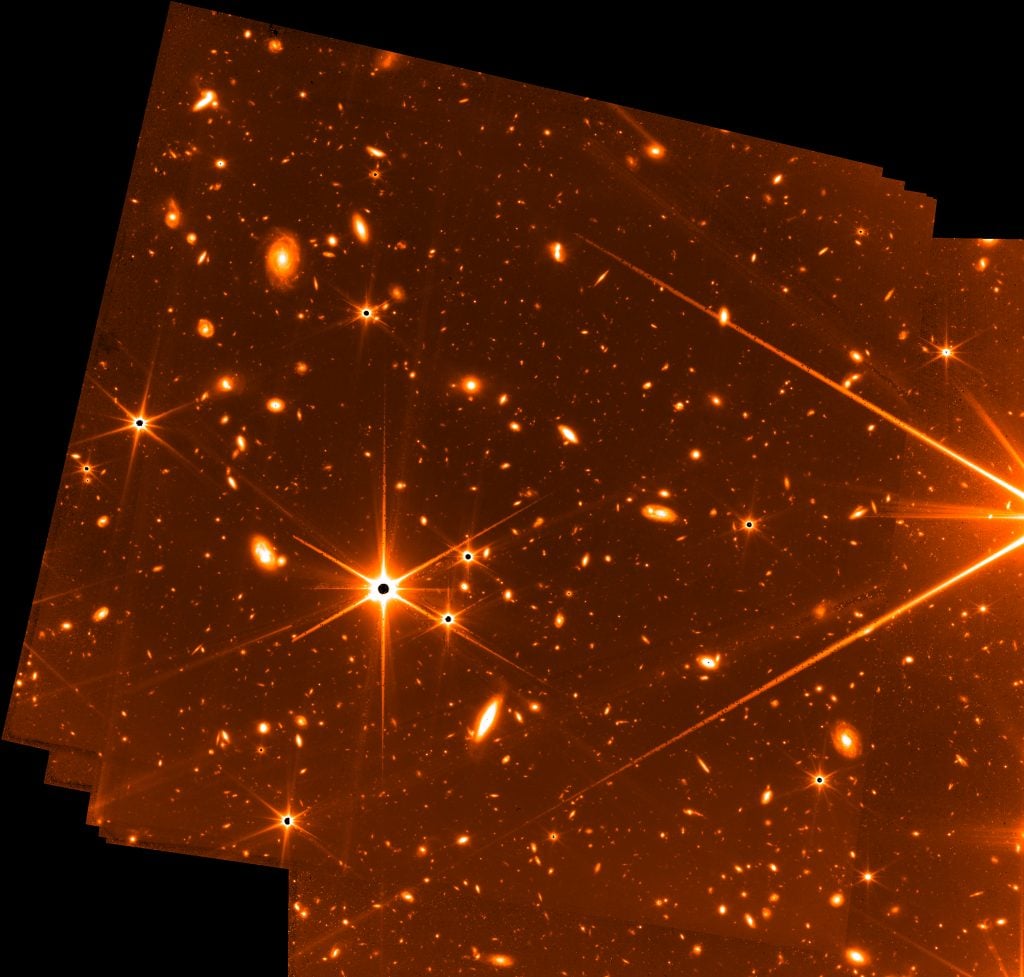A 'throwaway' engineering image from the James Webb Space Telescope's commissioning phase has turned out to be a stunningly deep view of the cosmos. It rivals the deepest of Hubble Deep Field images in revealing previously unseen distant galaxies.
Webb's Fine Guidance Sensor (FGS) enables the space observatory to find and lock onto its observing targets, enabling precision pointing for images and accurate science measurements. But the FGS is also capable of taking images.
During a week-long stability test in May, the team decided to keep the imagery that was being captured. The purpose of this engineering test was to lock onto one star and to test how well Webb could control its "roll" – literally, Webb's ability to roll to one side like an aircraft in flight.
Even though this image has not been optimized to be a science observation, the depth quality of this image is similar to the early engineering images taken after the completion of the process to fully focus the telescope’s mirror segments. There, images from each of the segments was like its own "Deep Field," – showing innumerable stars and galaxies – like the famous Hubble Deep Field images, but even deeper.
This new FGS engineering image was taken using 72 exposures over 32 hours – is among the deepest images of the universe ever taken, according to Webb scientists. In a JWST blog post, scientists said that when FGS' aperture is open, it is not using color filters like the other science instruments – meaning it is impossible to study the age of the galaxies in this image with the rigor needed for scientific analysis. But even when capturing unplanned imagery during a test, FGS is capable of producing stunning views of the cosmos.
Loading tweet...
— View on Twitter
Obviously, the test was performed successfully. But it also produced an image that sparks the imagination of scientists who will be analyzing Webb's science data, said Jane Rigby, Webb's operations scientist at NASA's Goddard Space Flight Center in Greenbelt, Maryland.
"The faintest blobs in this image are exactly the types of faint galaxies that Webb will study in its first year of science operations," Rigby said.
On Twitter, Lee Feinberg, Webb optical telescope element manager, said this image is a great example of why the past five months of commissioning the telescope was so magical for the team. "We added taking this guider data in parallel to our stability test sort of last minute for engineering reasons," he said.
The first full color images from JWST will be released on July 12, so this tantalizing look at what JWST will be revealing certainly sparks not only scientists' imaginations, but also the imaginations of all of us who have been anticipating this telescope for the past 30 years.
 Universe Today
Universe Today
